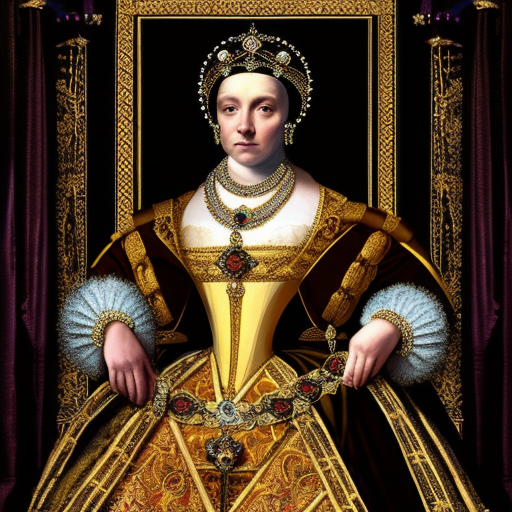The Six Wives of Henry VIII: A Royal Saga of Love, Power, and Tragedy
One-line summary: In “The Six Wives of Henry VIII,” historian Alison Weir delves into the captivating lives of the six women who were married to the infamous King Henry VIII, revealing a tumultuous saga of love, power, and tragedy.
The Early Years: Catherine of Aragon
The book begins by introducing Catherine of Aragon, Henry VIII’s first wife and the daughter of King Ferdinand and Queen Isabella of Spain. Catherine’s marriage to Henry was initially filled with hope and promise, but as the years passed and Catherine failed to produce a male heir, tensions began to rise. Henry’s desire for a divorce led to a conflict with the Catholic Church, ultimately resulting in the English Reformation. Despite Catherine’s resilience and unwavering faith, Henry divorced her and moved on to his next wife.
The Temptress: Anne Boleyn
Anne Boleyn, Henry’s second wife, is portrayed as a captivating and ambitious woman who captured the king’s heart. Anne’s refusal to become Henry’s mistress and her insistence on marriage led to a tumultuous affair, marked by political intrigue and betrayal. However, Anne’s inability to give birth to a male heir, coupled with accusations of adultery and treason, sealed her tragic fate. She was beheaded, leaving behind a legacy of controversy and fascination.
The Beloved Jane: Jane Seymour
Jane Seymour, Henry’s third wife, is depicted as a gentle and submissive woman who finally fulfilled Henry’s desire for a male heir. Despite her short reign as queen, Jane’s influence on Henry and her role in securing the future of the Tudor dynasty cannot be underestimated. However, her untimely death shortly after giving birth to Prince Edward left Henry devastated and searching for a new wife.
The Foreign Queens: Anne of Cleves, Catherine Howard, and Catherine Parr
The final section of the book explores the lives of Henry’s last three wives: Anne of Cleves, Catherine Howard, and Catherine Parr. Anne of Cleves, a political pawn in a strategic alliance, managed to escape her marriage with Henry relatively unscathed. Catherine Howard, a young and vivacious woman, became entangled in scandalous affairs, leading to her execution. Catherine Parr, the only wife to outlive Henry, was a learned and influential queen who played a significant role in the religious and intellectual developments of the time.
Throughout the book, Weir skillfully weaves together historical records, personal letters, and accounts to bring these women to life, providing a vivid and engaging narrative. She explores the complexities of their relationships with Henry, their struggles for power and survival in a treacherous court, and the impact they had on the course of English history.
Key takeaways:
- Henry VIII’s quest for a male heir drove him to divorce, behead, or outlive six wives.
- The lives of these women were shaped by political intrigue, religious conflicts, and societal expectations.
- Their stories highlight the precarious position of women in a patriarchal society.
- The reign of Henry VIII had far-reaching consequences, including the English Reformation.
In the words of Alison Weir: “The story of Henry VIII and his six wives has passed into legend, taught in the cradle as a cautionary tale and remembered in adulthood as an object lesson in the dangers of marrying into royalty.”
“The Six Wives of Henry VIII” offers a captivating glimpse into the lives of these remarkable women, showcasing their strength, resilience, and the enduring impact they had on history. It is a compelling read for anyone interested in Tudor history, royal scandals, and the complexities of power dynamics in the sixteenth century.












